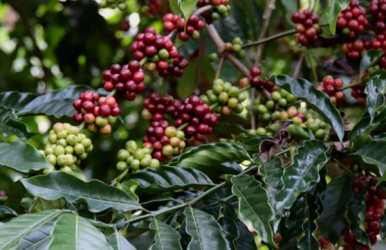How To Use Videos to Drive Conversions In Travel Business
BY Abdul Aziz Apr 11, 2022
Marketers today rely on videos to showcase their products or service to the audience. More than 80% of the internet audience is now spending billions of hours watching videos. And, eyeing this trend, search engine giant Google has modified its algorithm to prioritize the video content. According to a study, videos come in 52% of Google keyword searches, and more than 80% of these search results are derived from YouTube. Therefore, video marketing is not visually appealing, but they are perfect from the SEO point of view. Therefore, videos have become the main aspect of marketing, replacing the conventional marketing tricks. According to marketers, videos are much more effective than texts and images. They simply provide a sense of practicality to the viewer, and it will be easy to convince them after watching an introductory video of any product or service. That's the abject for selecting video as the prominent marketing tool for the travel business Marketers find many reasons to trust videos to promote their travel business. A few of the important reasons are mentioned below. Prime Reasons for Using Videos in Travel Business 1. Videos offer effortless engagement Using video content for marketing allows businesses to tap into a huge audience. Videos eliminate reading requirements, and travelers find it easy to view a video rather than spend hours reading texts. Since videos are replacing the conventional marketing techniques, that doesn't mean the value of the texts and images has decreased. Still, they are valuable to describe any specific location or its outstanding features. Videos arrest the viewers' attention, and that is the best part of promoting the travel business. 2. Helps to increase the visibility of the brand A video can be heavily edited and customizable. They can be made to intensify the viewer's emotion and yield the best result for the travel industry. Engaging video contents are effective in influencing the decision-making process. Plus, when you publish a catchy and informative video on your timeline, not only will it grab appreciation from your followers, but they never hesitate to share that with their circle. Due to this feature, marketers never hesitate to invest thousands of dollars in making commercial videos. 3. Better click-through-rates Call-to-Action or CTA is one of the finest features that drive viewers to land on your travel website directly. It provides a passage to view and features of the travel agency. The website and the While creating the video, ensure to include CTA in the video so that you can allow the travelers to go to the next point once the video is over. CTA is the key to video promotion, and it enhances engagement with your audience and improves click-through rates. 4. Videos are suitable for all the occasions If you want to introduce any new tour, then creating a video on that specific topic is the best way to let your audience know about that. You can insert new information providing fresh highlights or the current one. It is also possible to introduce the travel team or an interview with a client who has already availed of your package. This kind of inclusion will make the video a real one. 5. Higher email click-through-rates Videos are attractive, and inserting the word video means it will attract the viewer's attention. The same thing applies to email marketing. When you insert a video in the email, chances are the audience will open the email and read what you have put there. That means inserting video will drive more traffic to the website, and once the traffic flow grows, the chance of conversion also grows simultaneously. How to Use Video to Drive More Conversions in the Travel Business? Here is how to use video to convert viewers to potential customers for your travel business. 1. Create Engaging video content Creating videos is the finest way to engage the audience. You can try to create amazing videos using an online video maker tool. Making use of these tools can be quite beneficial for marketers as these tools are very versatile and customizable due to their easy-to-use features. Their uses and benefits are endless for a brand. Once the audience starts to believe in the brand through these original videos, the business is bound to grow. You can post this video on social media channels to draw maximum attention. If you have any website, then upload these types of videos on them, and in this way, the viewers will get an overall idea regarding the brand and the proprietor. 2. Virtual meeting with clients Virtual meetings are a fun way to improve the engagement with the clients, especially for the people who are planning a group tour. Keep the meetings as simple as possible so that the clients will feel easy to interact with you openly. If the client is not planning anything to travel anywhere, ask about the future planning. This is the right way to concrete the relationship that ultimately delivers the best result to the travel business. 3. Share HD quality destination videos If you are planning to launch any travel package based on any specific location, then before that, share a few quality videos regarding that destination. These videos can also be added to proposals you create for the clients. This is a fun and interactive way to showcase the beauty of the destination they probably want to travel to in the future. 4. Insert videos in the client's proposal To gain the customer’s trust, it is the best way to embed videos in the proposals. The videos can be based on the destination, hotel, and tour. This is why many marketers today use videos while preparing clients' proposals. 5. Happy hour with clients If you have something special to share with your clients, arrange a happy hour. Fix a time where everyone can join and discuss the special feature or plan with your loyal clients. In this session, you can also take a couple of questions from the clients and answer them directly during the session. Virtual meetings are cool since you can meet with your loyal clients anywhere without barriers. 6. Creating a travel vlog Travel business can be thriving when more and more people travel to their favorite destination. If they don't know the destination and the details available there, they won't step out of their comfort zone. To inspire them to travel, you should create travel vlogs. These videos don't need any fancy film production techniques, but they must be simple and interactive. Make travel vlogs on these topics: Walkthrough tour Hotel room tour Vlogs are based on the delicacies and foods in the restaurants. Videos that record the part of the tour Assembling multiple clips to prepare a complete video highlighting the best features of the destination 7. Share travel tips through the videos Few people want to travel, but they have a lack knowledge of how to prepare for it. If you are leading a travel business, then create informative videos regarding how to prepare yourself for travel. Giving the ideology in the form of travel tips it's going to lead to a positive impact on clients or visitors. Making videos on packing tips, food, and beverage selection, clothes to carry, and accessories that help during the travel is a fantastic idea to improve engagement with the audience. These videos also draw a positive impression from the audience that directly impacts brand value. 8. Drive more sales by video greetings Video greetings are innovative ways to drive more sales towards your travel business. You can record a quick 1-2 minutes greeting video for your client and send it to him. Thank him for accepting the proposal and wishing for a better travel experience in the video. These are the ways that draw more attraction and brand loyalty from the customers. Preparing these videos is also simple, and there is no need to invest heavily while creating them. 9. Make question-answer videos Question-answer sessions are best to improve the engagement with the clients. Brand loyalty is the best thing that delivers long-term results from the clients, and this is why you should spare some time to make a Q&A video. Take questions from the comments and answer them by naming the person. In this way, that person will feel privileged and loyal forever. 10. Create "how-to" or demo videos Share videos with your followers describing any unique recipe they can cook in the home. Describe the steps of the recipe and make it visually appealing. Once you create and upload it to your social media accounts, it will attract maximum attention from the audience. Conclusion Video is the most powerful marketing tool now. Using the right video marketing technique in the travel business will surely drive more leads to the brand. Read Also: How To Fund The Cost Of Travelling Top 5 Travel Tips For Your Next Trip To China 5 Fascinating And Fun Travel Destination Ideas In Africa For Vacation Top 10 Scenic Snowflake Cities In The U.S. To Travel To This Winter

























